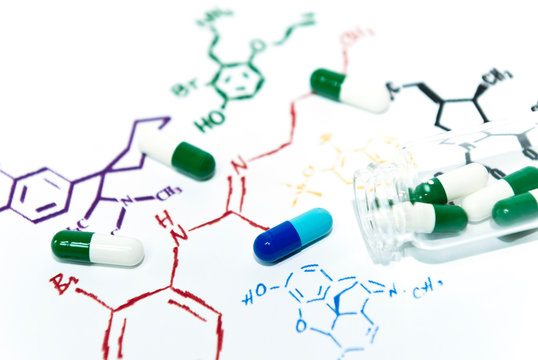Drug discovery and development
Drug discovery and development is a long and complex process that can take many years to bring a new drug to market. It involves identifying a disease target, finding a molecule that can interact with that target in a way that produces a therapeutic effect, and then testing that molecule in animals and humans to ensure that it is safe and effective.
What We offer
Our Support in Drug Discovery and Development Process
The drug discovery and development process can be divided into five main stages and each stage, we offer our services:

- Discovery and development: This stage involves identifying a disease target and finding a molecule that can interact with that target in a way that produces a therapeutic effect. This can be done through a variety of methods, such as screening large libraries of chemical compounds, using computer modeling to design new drugs, or studying traditional medicines.
- Preclinical research: Once a promising drug candidate has been identified, it is tested in animals to assess its safety and efficacy. These studies are designed to identify any potential side effects of the drug and to determine whether it is effective at treating the disease of interest.
- Clinical research: If the drug candidate is safe and effective in animals, it can then be tested in humans in clinical trials. Clinical trials are conducted in three phases:
- Phase 1: This phase involves testing the drug in a small group of healthy volunteers to assess its safety and to determine the maximum tolerated dose.
- Phase 2: This phase involves testing the drug in a larger group of people with the disease of interest to assess its efficacy and to further evaluate its safety.
- Phase 3: This phase involves testing the drug in a large group of people with the disease of interest to confirm its efficacy and to compare it to existing treatments.
- Regulatory Authority review: If the drug is shown to be safe and effective in clinical trials, it can be submitted to the Regulatory Authority for approval. The Regulatory Authority will review the data from the clinical trials and make a decision about whether to approve the drug for marketing.
- Post-market safety monitoring by Regulatory Authority: Once a drug is approved by the Regulatory Authority, it continues to be monitored for safety after it is marketed. This is done to identify any rare or long-term side effects that may not have been detected in the clinical trials.
Challenges in Drug Discovery and Development
Drug discovery and development is a very challenging process. The success rate for new drugs is very low, with only about 1 in 10,000 drug candidates that enter clinical trials eventually being approved by the FDA.
One of the biggest challenges in drug discovery is identifying promising drug targets. Diseases are often complex and involve multiple different biological pathways. It can be difficult to identify the key targets that need to be modulated in order to produce a therapeutic effect.
Another challenge is developing drugs that are both safe and effective. Drugs need to be able to interact with their target in a way that produces a therapeutic effect without causing any serious side effects. This can be difficult to achieve, especially for drugs that are designed to target complex biological processes.
The drug discovery and development process is also very expensive. It can cost billions of dollars to bring a new drug to market. This is one of the reasons why the pharmaceutical industry is so focused on developing blockbuster drugs that can generate high sales.
Emerging Trends in Drug Discovery and Development
There are a number of emerging trends in drug discovery and development. One trend is the use of artificial intelligence (AI) to identify new drug targets and to design new drugs. AI can be used to analyze large datasets of biological data to identify patterns that may not be obvious to human scientists.
Another trend is the development of personalized medicine. Personalized medicine involves developing drugs that are tailored to the individual patient’s genetic makeup. This is being achieved through the increasing use of genomic sequencing to identify genetic mutations that are associated with different diseases.
Drug discovery and development is a long and complex process, but it is essential for developing new treatments for diseases. The pharmaceutical industry is constantly innovating and developing new technologies to improve the drug discovery and development process. This is leading to the development of new and more effective drugs for a wide range of diseases.
Linkedin Link
Medical Device Testing
Laboratory Testing

SCS Blog Category
Blog - ACUTE TOXICITY STUDIES
Blog - Biodegradability Testing – Chemical Impact
Blog - Environmental Fate & Toxicology Testing
Blog - In Vitro Studies
Blog - Laboratory Testing & Analysis
Blog - Medical Devices
Blog - OECD GLP
Blog - Scientific
Table of Contents
Toggle
